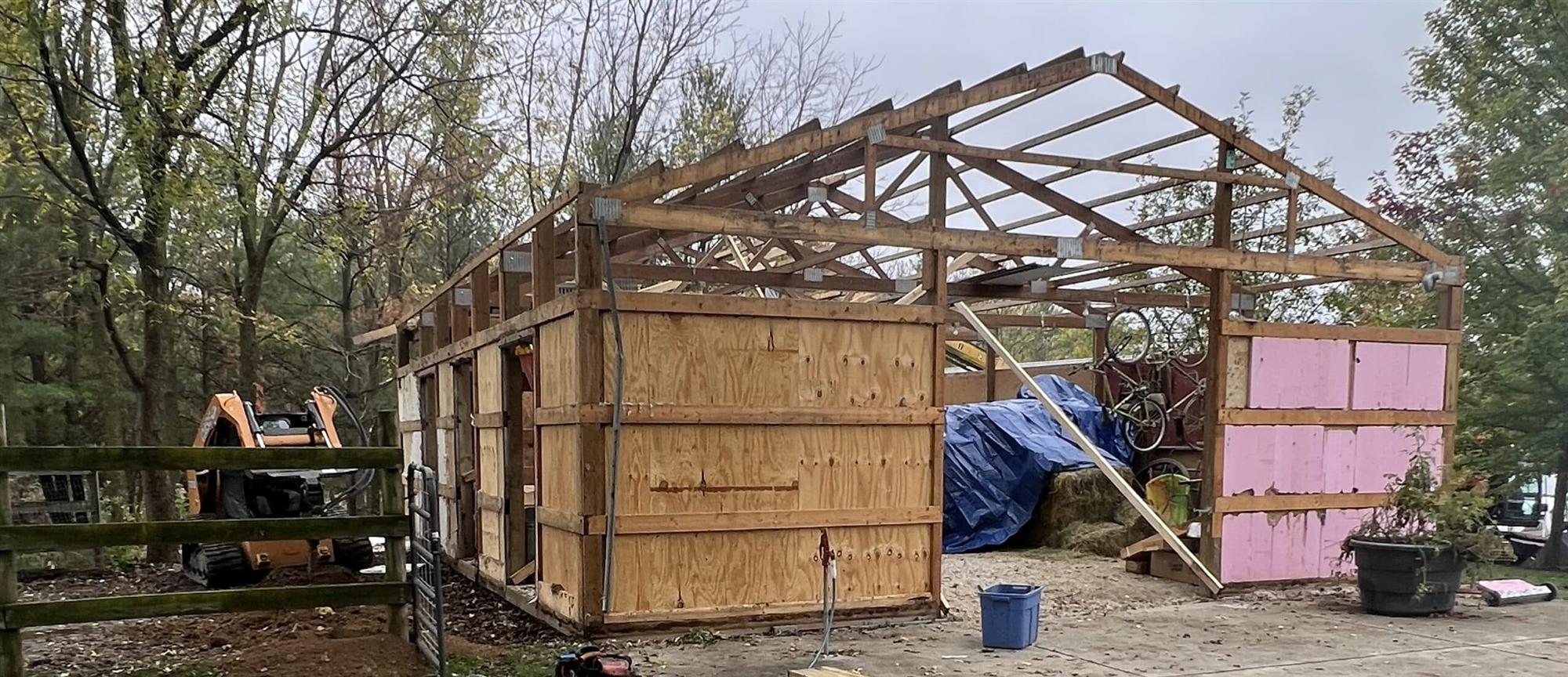Post frame buildings are a popular choice for many people looking to build a structure for agricultural, residential, commercial, industrial, or recreational use. They are cost-effective, flexible in design, quick to construct, and durable. However, they also have their limitations. In this article, we will take a closer look at what a post frame building is, the history of pole barns, the differences between pole barns and post frame buildings, the pros and cons of owning one, and the various uses for post frame buildings.

What is a Post Frame Building?
A post frame building is a type of structure that is constructed using columns or “posts” as the primary support structure. The columns are typically made of dimensional lumber that is laminated together. Any lumber that is in the ground is treated, anything above ground is not. The columns can be buried in the ground, providing a solid foundation for the structure. The columns can also be mounted on concrete using brackets. Trusses are installed, girts and purlins are added, then the building is sheeted and trimmed in steel.
History of Post Frame Buildings
Pole barns have a long and storied history, with the first pole barns being built in the 1930s. They were originally developed as a cost-effective alternative to traditional barns, which were built using more expensive materials and construction methods. Over the years, pole barn construction has evolved into post frame construction, with the addition of insulation, improved roofing materials, the use of multi-ply laminated columns, and other features that have made post frame buildings even more versatile and practical. Today, post frame buildings are one of the most popular types of outbuildings, used for a variety of purposes, including agriculture, residential living, commercial storage, and more.
Pole Barn vs Post Frame: What’s the Difference?
Pole barn and post frame building have the same exact meaning. Pole barn, pole shed, pole building, and post frame building are all synonyms. Pole barn is the oldest and most popular term to describe this method of framing. The term “post frame building” is becoming the new standard term among post frame builders. Originally, pole barns were built with round poles, hence the term, “pole building”. This term has not gone away even though the construction materials have changed. The industry has moved past using poles and now uses a column made of dimensional, laminated lumber. Many people still refer to their post frame building as a pole barn, not realizing that this is really a term of the past. Buildings are not made with poles anymore, so the correct term for today’s buildings would be a post frame building. Whether you call it a pole barn or a post frame building, we will still understand.
Pros of a Post Frame Building
The following are some of the benefits of owning a post frame building:
Cost-Effective
Post frame buildings can be less expensive than stick frame buildings, making them a cost-effective option for many people.
Flexibility in Design
Post frame buildings can be designed to meet the specific needs of the owner, offering flexibility in terms of size, shape, and features.
Quick Construction Time
Post frame buildings can be constructed more efficiently than traditional buildings, often in a matter of weeks rather than months.
Durability and Longevity
Post frame buildings are built to last, often featuring treated lumber with steel exterior and other materials that are designed to withstand the elements and last for many years.
Energy Efficiency
Some post frame buildings are designed with energy-efficient features, such as insulation, which can help reduce energy costs and improve the overall comfort of the building.
Cons of a Post Frame Building
The following are some of the drawbacks of owning a post frame building:
Limited Customization Options
While post frame buildings can be designed to meet the specific needs of the owner, they still can have limitations in terms of customization options. Generally these limitations are seen with the roof design. Everlast Structures provides some of the most customization options in the post frame construction industry.
Limited Insulation Options
Some post frame buildings are not designed with insulation, which can make them less energy-efficient and less comfortable to use in extreme weather conditions.
Uses of a Post Frame Building
Post frame buildings can be used for a variety of purposes, including:
Agricultural Uses
Post frame buildings are commonly used for agricultural purposes, such as storing equipment and supplies, housing livestock, and more.
Residential Uses
Post frame buildings are becoming increasingly popular as residential structures, with many people using them as barndominiums.
Commercial Uses
Post frame buildings are a versatile option for commercial storage, offering ample space for businesses to store equipment, supplies, and more.
Industrial Uses
Post frame buildings are often used in industrial settings, offering a cost-effective and durable option for storage and other industrial applications.
Recreational Uses
Post frame buildings are also popular for recreational uses, such as man-caves and she-sheds, offering a space for people to enjoy hobbies, pursue projects, and more.
Storage Spaces
Post frame buildings are also often used for storage, offering a convenient and secure option for storing vehicles, equipment, and other items.
Conclusion
In conclusion, post frame buildings offer a cost-effective, flexible, and durable option for a variety of uses. While they do have some limitations, they are still an excellent choice for many people. Whether you’re looking to build a barndominium, man-cave, commercial buildings,, or simply need a storage space, a post frame building may be the perfect solution for you.
